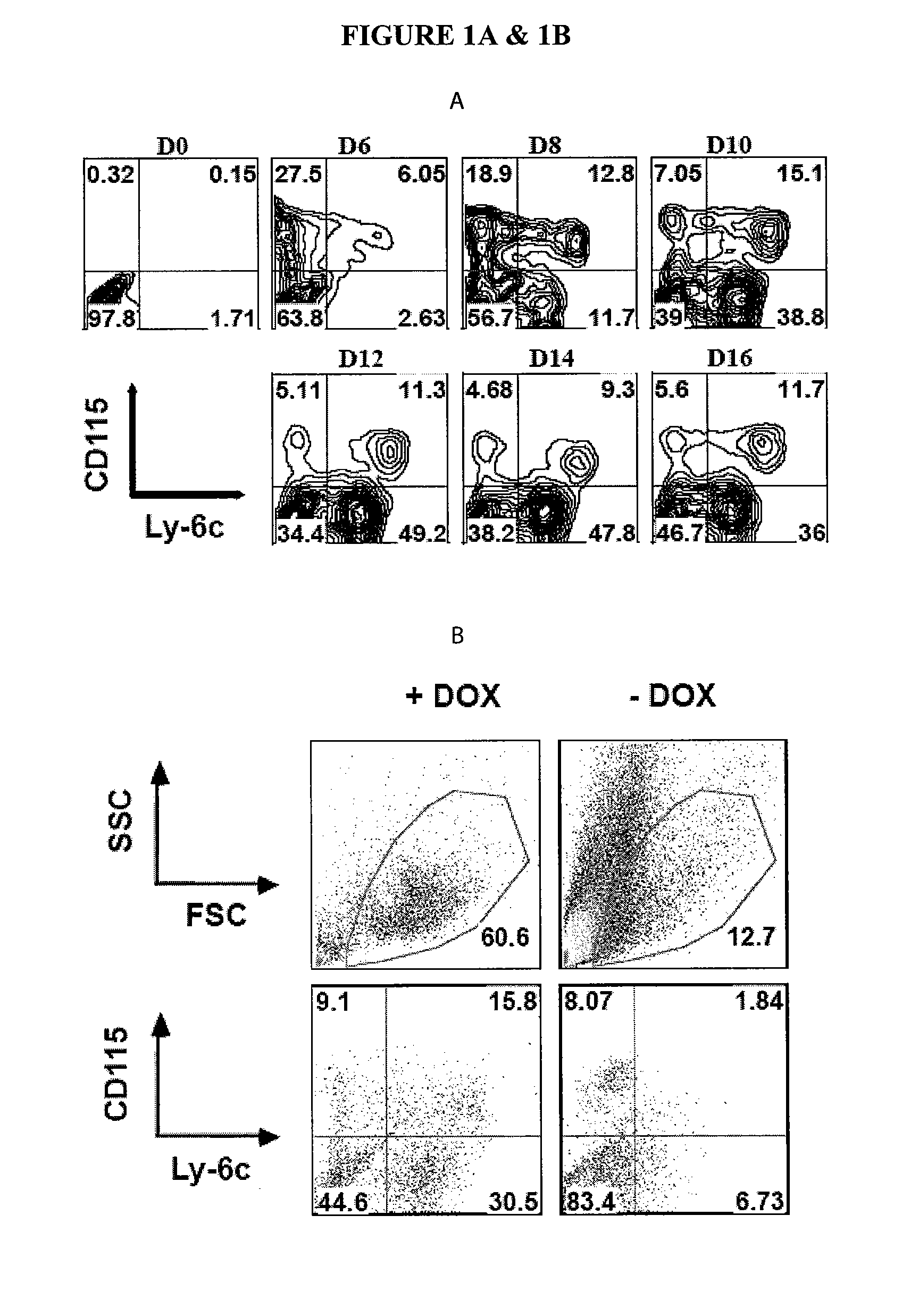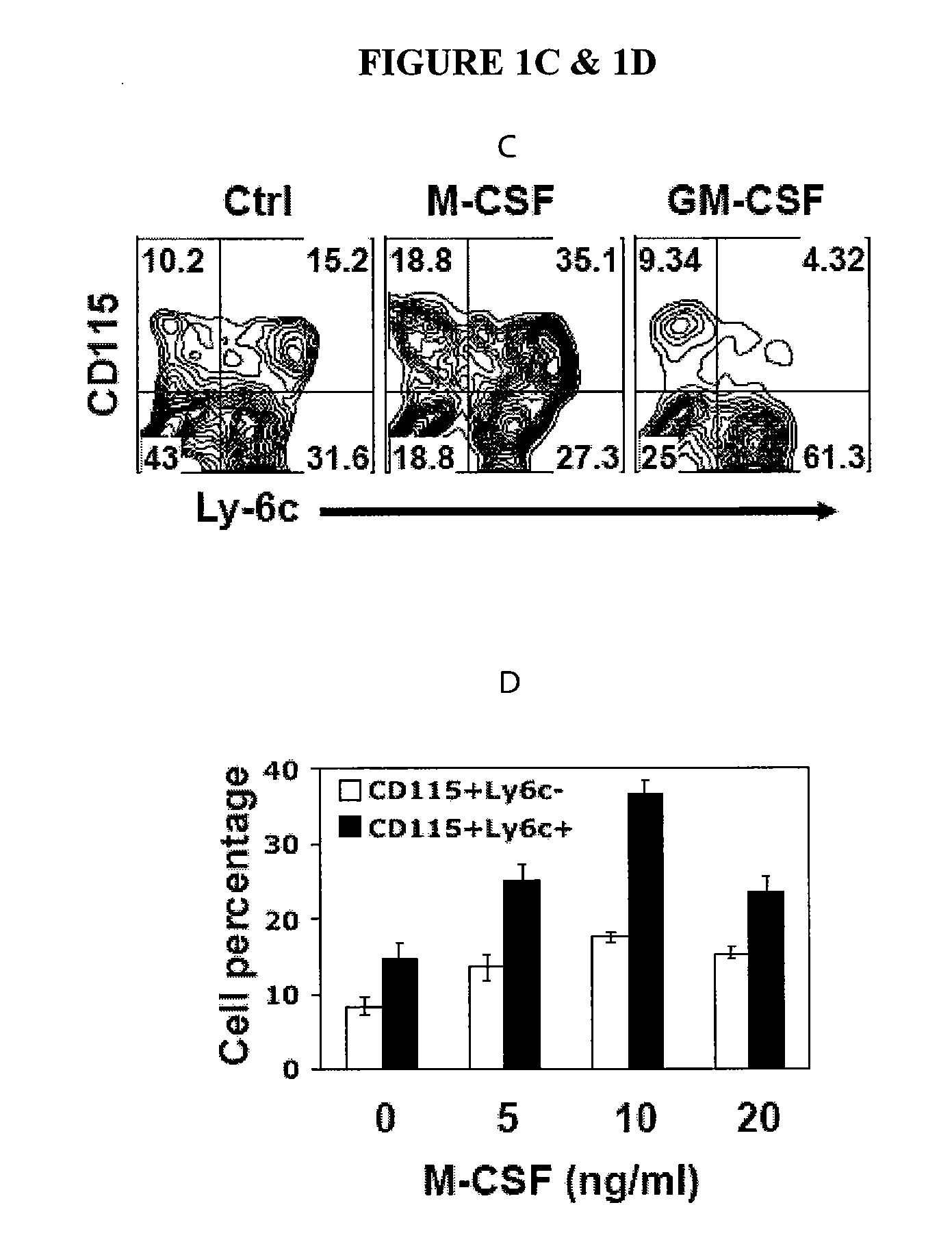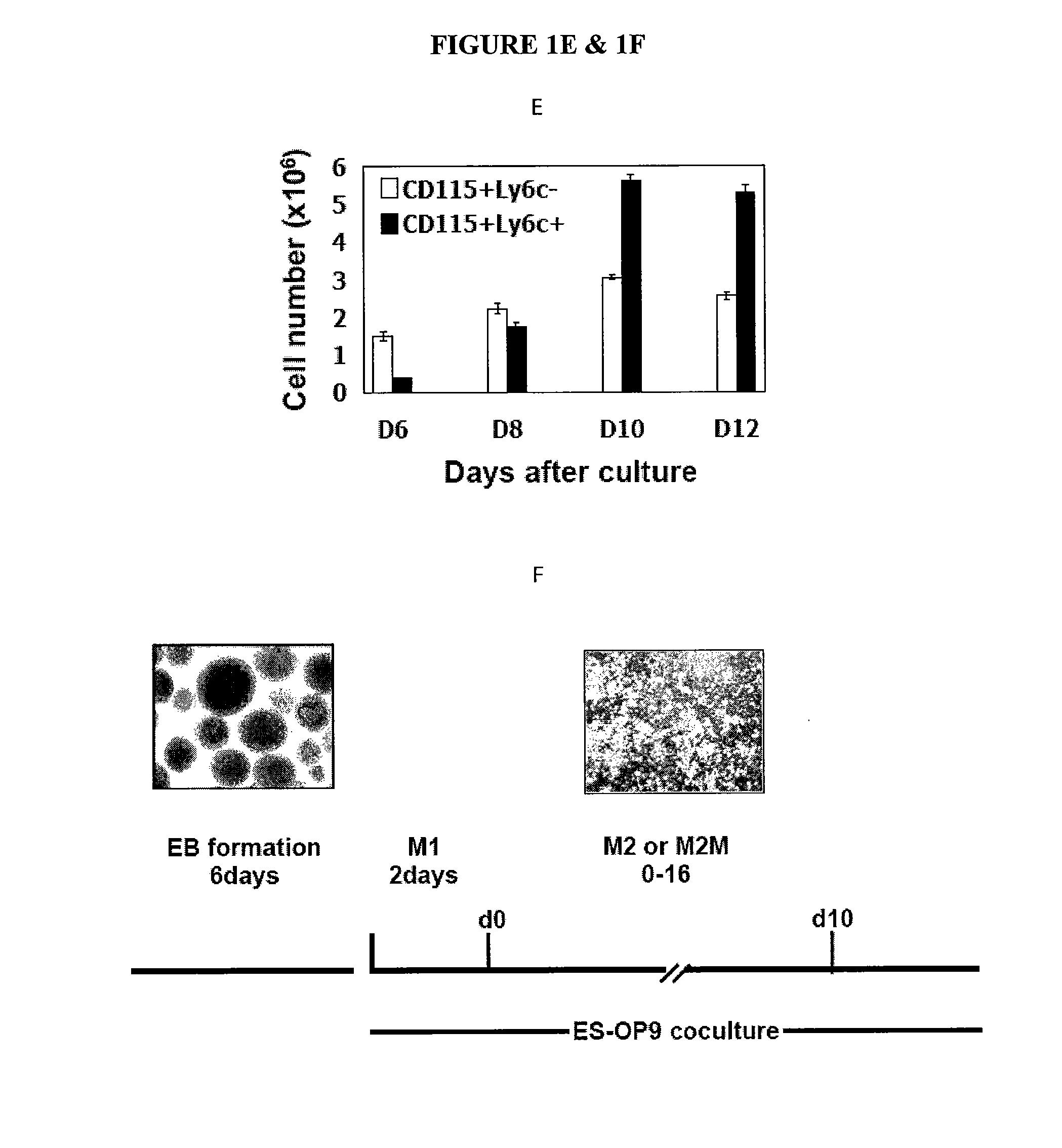In Vitro Generation of Myeloid Derived Suppressor Cells
a suppressor cell and in vitro technology, applied in the field of in vitro generation of myeloid derived suppressor cells, can solve the problems of hampered clinical application potential of mdscs and lack of cells, and achieve the effect of effective dosage level
- Summary
- Abstract
- Description
- Claims
- Application Information
AI Technical Summary
Benefits of technology
Problems solved by technology
Method used
Image
Examples
example 1
Myeloid-Derived Suppressor Cells can be Generated Efficiently from ES Cells
[0155]The HoxB4 ES cell line (Kyba et al.)) was used as starting cells for generation of MDSCs. Transduction with HoxB4, a member of the Hox family of homeodomain transcription factors, has been shown to bias ES cells differentiation to myeloid development over a wide range of ectopic expression levels. (Pilat S, Carotta S, Schiedlmeier B, et al. HOXB4 enforces equivalent fates of ES-cell-derived and adult hematopoietic cells. Proc Natl Acad Sci USA. 2005; 102:12101-12106.) The CD115+Gr1+F4 / 80+ cells were also identified as a major component of MDSCs in tumor-bearing mice. Thus, the present experiments were conducted to establish a differentiation condition conducive to the induction of the CD115+Gr1+F4 / 80+ population from ES cells. A three-stage differentiation strategy was utilized, as described in the Methods section. The cytokine requirement of MDSC development was targeted for particular evaluation. Afte...
example 2
ES Cell-Derived CD115+ Cells Exhibit Strong Suppressive Capacity In Vitro
[0160]Immune suppression is the hallmark feature of MDSCs. Using HoxB4 ES cell line, MDSCs expressing both CD115+ and Ly-6C+ have been generated as described in Example 1. These ES cell-derived myeloid cells were tested for their functional characteristics. Differentiated cells were separated into CD115+ and CD115− cells using magnetic beads and co-cultured with splenocytes isolated from naïve 129SvEv mice.
[0161]Remarkably, HoxB4 ES cell-derived CD115+ but not CD115− cells displayed potent suppressive activity against T cell proliferation stimulated either by stimulus with anti-CD3 plus anti-CD28 (FIG. 2A) or by allo-antigens in a mixed lymphocyte reaction (MLR) setting (FIG. 2B). Because the CD115+ fraction was composed of two populations, CD115+Ly-6C+ and CD115+Ly-6C− cells, the two subsets were purified by FACS sorting and conducted similar proliferation assays. Various numbers of ES cell-derived cells isola...
example 3
The Suppressor Function of ES-MDSCs Involves Multiple Pathways
[0164]MDSCs are known to suppress T-cell responses directly via diverse mechanisms, e.g. production of nitric oxide (NO), expression of arginase and nitric oxide synthetase (NOS), two inducible enzymes regulating arginine metabolism, and / or secretion of IL-10 and TGF-β (Sinha P, Clements V K, Bunt S K, Albelda S M, Ostrand-Rosenberg S. Cross-talk between myeloid-derived suppressor cells and macrophages subverts tumor immunity toward a type 2 response. J Immunol. 2007; 179:977-983, Bronte V, Zanovello P. Regulation of immune responses by L-arginine metabolism. Nat Rev Immunol. 2005; 5:641-654, Rodriguez P C, Ochoa A C. Arginine regulation by myeloid derived suppressor cells and tolerance in cancer: mechanisms and therapeutic perspectives. Immunol Rev. 2008; 222:180-191, Terabe M, Matsui S, Park J M, et al. Transforming growth factor-beta production and myeloid cells are an effector mechanism through which CD1d-restricted T...
PUM
| Property | Measurement | Unit |
|---|---|---|
| density | aaaaa | aaaaa |
| concentration | aaaaa | aaaaa |
| cell surface | aaaaa | aaaaa |
Abstract
Description
Claims
Application Information
 Login to View More
Login to View More - R&D
- Intellectual Property
- Life Sciences
- Materials
- Tech Scout
- Unparalleled Data Quality
- Higher Quality Content
- 60% Fewer Hallucinations
Browse by: Latest US Patents, China's latest patents, Technical Efficacy Thesaurus, Application Domain, Technology Topic, Popular Technical Reports.
© 2025 PatSnap. All rights reserved.Legal|Privacy policy|Modern Slavery Act Transparency Statement|Sitemap|About US| Contact US: help@patsnap.com



